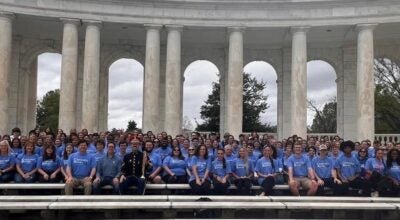Alabaster grows by 34 percent in 10 years
Published 3:23 pm Wednesday, March 2, 2011
By NEAL WAGNER / City Editor
Alabaster saw about half the percentage of population growth in the first decade of the new millennium than it did in the 1990s, but still recorded a more than 34-percent increase over the past 10 years.
From 2000-2010, Shelby County’s largest city grew from 22,619 residents to 30,352 residents. Though the growth percentage of the past 10 years was not as high as the nearly 70 percent increase from 1990-1999, 2010 marked the first time Alabaster’s population has topped 30,000.
Actions taken by the mayor and City Council because of the explosive growth in the 1990s likely played a role in Alabaster’s growth rate from 2000-2010, said Alabaster Mayor David Frings.
“In the late ‘90s, the mayor, City Council and planning and zoning board at that time tried to enact measures to slow that growth down,” Frings said. “They set parameters for developers, like the minimum lot size, housing density and things like that.”
Frings, who has been in office since 2000, said the growth of the past 10 years likely would have been much higher if the city hadn’t enacted the development guidelines in the 1990s.
“We wanted to grow, but not at a rate that we couldn’t keep up with it,” Frings said. “Often, a developer will want to build the highest density of homes possible in an area.
“We negotiate with them, and instead of 1,000 houses, they will build 300 houses.
‘We want growth, but not uncontrolled, unsustainable growth. We think we’ve done that.”
Because of the way the state’s tax structure is organized, sales and other business-related taxes typically fund a large percentage of city departments, such as police, parks and recreation and fire.
Frings said if Colonial Properties Trust hadn’t built the Colonial Promenade shopping center in the city in 2005, Alabaster city services likely would be struggling to support its current population.
“If we hadn’t marketed and recruited the stores at the Promenade when we did, the city would not be faring as well as it is now,” Frings said. “Getting that shopping center was a have-to-do for us.”
Most of the city’s growth took place before the housing market crashed a few years ago, and Alabaster’s population likely will remain relatively unchanged for a few more years, Frings predicted.
“The housing market has slowed down way too much. Last year, we granted something like seven or 12 new home permits. Before the crunch, it was between 200-300 new homes a year,” Frings said.
“I think it’s going to take an extremely long while for the economy to come back,” he added. “It’s probably going to be a three- or four-year process.”









